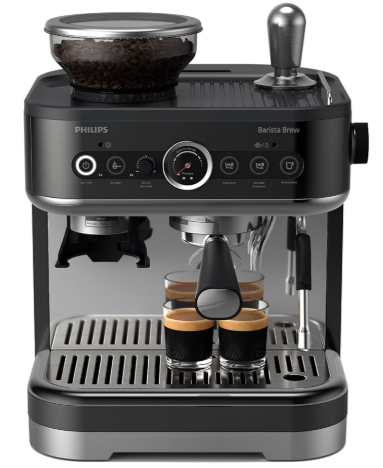Is Your Kombucha Alive? Signs of a Healthy Ferment
METHODSBLOG NEWS
10/10/20254 min read


Understanding Kombucha Fermentation
Kombucha fermentation is a fascinating process that relies on a combination of tea, sugar, and a symbiotic culture of bacteria and yeast (SCOBY). Each of these components plays a crucial role in creating the distinct flavor and health benefits associated with kombucha. The base of the beverage often starts with black or green tea, which provides essential nutrients for the fermentation process.
The SCOBY, a gelatinous mass, is instrumental in this transformation. It contains various strains of yeast and bacteria that work together to ferment the sugars present in the tea. Initially, sugar is added to the tea to provide a food source for the yeast. The yeast consumes the sugar, converting it into alcohol and carbon dioxide, while simultaneously creating an acidic environment through the action of bacteria. This acidity is essential, as it prevents harmful microorganisms from surviving, ensuring that the ferment remains healthy. The balance between yeast and bacteria determines the kombucha’s taste and effervescence, with longer fermentation generally resulting in a more acidic flavor profile.
The fermentation time is a critical factor that influences the overall quality of the drink. Typically, a primary fermentation period of 7 to 14 days is recommended. During this time, the interplay of yeast and bacteria continues to evolve, contributing to the complexity of flavors. An optimal environment for fermentation is required to promote the health of the SCOBY, including maintaining a warm temperature and ensuring proper airflow. Any drastic changes in temperature or exposure to contaminants can adversely affect the fermentation process, potentially leading to an unhealthy batch of kombucha.
In essence, understanding the science behind kombucha fermentation is vital for brewing a lively and healthful drink. The interplay of tea, sugar, and SCOBY, along with the fermentation conditions, collectively influence the outcomes. Monitoring these factors closely can lead to a successful ferment that embodies the vibrant characteristics of a well-crafted kombucha.
Visual Indicators of a Healthy Batch
When assessing the vitality of your homemade kombucha, several visual indicators can provide insight into the health of your ferment. One of the primary signs to observe is the presence of bubbles. Healthy kombucha typically exhibits a consistent effervescence, which is a clear indication of active fermentation and carbonation. These bubbles form as a result of the fermentation process, during which yeast consumes sugars, producing carbon dioxide. A lively batch will showcase numerous small bubbles, often seen rising to the surface or clinging to the sides of the jar.
Another crucial visual cue is the appearance of the SCOBY, or Symbiotic Culture Of Bacteria and Yeast. A healthy SCOBY should appear firm, slightly gelatinous, and may present variations in color ranging from off-white to light brown. Imperfections such as a few dark spots or a slight color change are generally normal, but any significant changes, such as a translucent or overly slimy texture, may suggest issues. A healthy SCOBY will also not have a foul odor, but rather a pleasant, vinegary aroma.
Additionally, sediment at the bottom of the brewing vessel is normal and should not cause alarm. This sediment consists of yeast and can indicate that fermentation is progressing well. Conversely, it is essential to recognize signs of an unhealthy batch. If you observe mold—typically green, black, or white fuzzy growth—or a visible off-color in the liquid, then these can be potential red flags signaling spoilage or contamination. By closely monitoring these visual indicators—bubbles, SCOBY health, and sediment formation—you can ensure that your kombucha remains a delicious and safe beverage. Understanding these aspects will further enhance your brewing skills and encourage successful ferments in the future.
Sensory Evaluation: Taste and Smell
When it comes to assessing the health of your kombucha, taste and smell act as vital indicators of its fermentation process. A properly fermented kombucha presents a harmonious balance of flavors. The initial taste should be pleasantly sweet, complemented by a sour tang that develops from the fermentation process. Ideally, the sourness should be mild and appealing; overwhelming acidity may suggest that the kombucha has over-fermented, resulting in an unpalatable drink. If you find that your kombucha leans too heavily toward sour, it may have reached a point of no return, leading to a less enjoyable experience.
Another aspect to consider is the complexity of flavors in your kombucha. A well-made kombucha will often present additional notes that vary depending on the tea used, the length of fermentation, and any flavoring agents added. For instance, you may detect hints of fruit, herbs, or spices. If your kombucha lacks depth and feels flat, it could indicate insufficient fermentation or a problem in the brewing process.
Aroma is equally crucial in evaluating kombucha's viability. A healthy kombucha typically emits a fresh, vinegar-like scent, indicating the presence of acetic acid, which is a natural byproduct of the fermentation process. Conversely, if you sense an off-smell resembling mold, rotten eggs, or excessively overpowering vinegar, it may signal spoilage. In such cases, it is advisable to discard the batch. For best results, engage your senses before drinking; take a moment to inhale the aroma, followed by a balanced sip, allowing the flavors to dance on your palate. This sensory evaluation will ensure that your kombucha lives up to its potential for refreshment and health benefits.
Common Problems and Troubleshooting
When brewing kombucha, various problems may arise that can affect the quality and safety of your final product. Recognizing these issues early allows for effective troubleshooting and ensures a lively ferment. One of the most common problems is excessive sourness. This can occur when the fermentation period is prolonged or if there is an imbalance in the tea-to-sugar ratio. To remedy this, consider shortening the brewing time or adjusting the sugar content in your recipe. Regularly tasting the kombucha during fermentation is essential; it allows you to gauge the flavor profile and decide when to bottle.
Flatness is another issue that kombucha brewers may encounter. Flat kombucha lacks carbonation, which can occur for several reasons, including inadequate fermentation time or insufficient sugar content. To increase fizziness, ensure you provide enough sugar for the secondary fermentation process. Additionally, consider sealing your bottles tightly to trap gases. You may also wish to experiment with adding flavorings, such as fruits or herbs, during the second fermentation, which not only enhances flavor but can also increase carbonation levels.
Mold is a serious concern when brewing kombucha, as it indicates a failure in the fermentation process and can compromise your brew's safety. If you spot any mold on the surface of your kombucha, it is crucial to discard the entire batch, including the SCOBY. To prevent mold growth in the future, maintain proper hygiene when handling equipment, ensure adequate ventilation during fermentation, and use fresh ingredients. It is also important to store your kombucha in a suitable environment with consistent temperatures. By addressing these common problems proactively, one can cultivate a consistently healthy and thriving kombucha that offers a refreshing, effervescent experience.
One of our favorite coffee makers....
PHILIPS Barista Brew Semi Automatic Espresso Machine


About this item
Brew like a barista: The Philips Barista Brew Espresso Machine empowers coffee enthusiasts to create barista-quality brews with tools like the 58mm portafilter and single & dual walled filter baskets.
Integrated guidance: Enjoy intuitive guidance for crafting every cup, ensuring a rich aroma and satisfying espresso experience with the premium calibrated tamper & countertop-safe tamping system.
Elevate your coffee experience: Enjoy a 250g bean container that ensures freshness of your beans.
Upgrade your milk frothing experience: Elevate your milk frothing experience effortlessly with the 450ml stainless steel milk jug and powerful steam wand.
Choose your ideal brew: experience convenience with the Americano button and integrated hot water outlet, or choose a single or double espresso.
Click 'Shop Now' to find on Amazon...
Why the PHILIPS Barista Brew Semi-Automatic Espresso Machine one of our favorites...
The PHILIPS Barista Brew Semi Automatic Espresso Machine is more than just a coffee maker—it's a daily dose of barista-level bliss in our own kitchen. It’s quickly become one of our favorite machines, and here's why.
First, let’s talk about consistency. This machine delivers rich, velvety espresso shots with the perfect crema—every single time. Whether you're pulling a single or a double, the semi-automatic design gives you control without being overly complicated, making it ideal for both beginners and seasoned home baristas.
The built-in steam wand is another major win. It creates creamy, café-quality microfoam for lattes, cappuccinos, and flat whites. It heats up quickly and gives you just the right amount of power to texture milk exactly how you like it.
